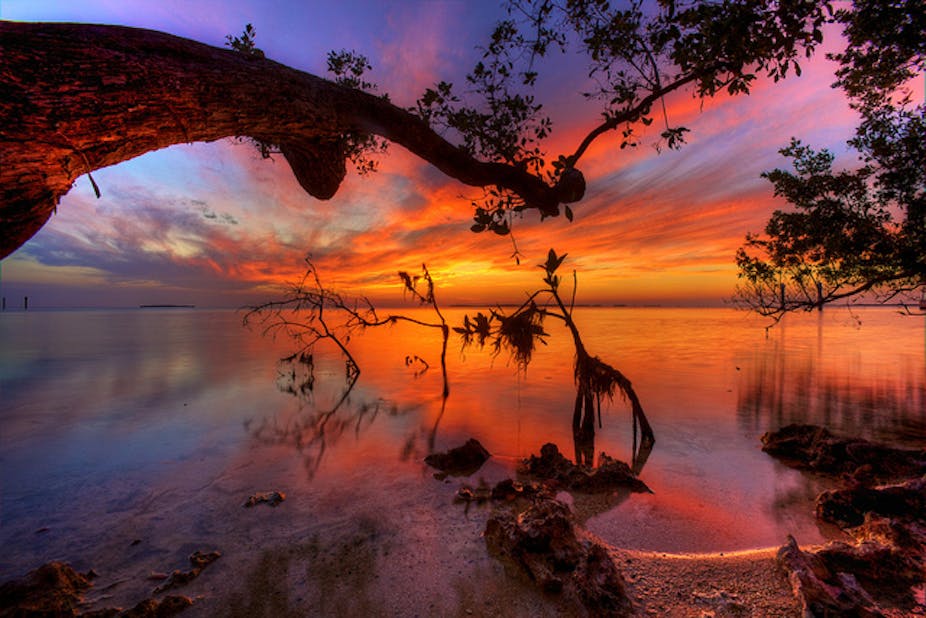One of our most valuable stores of carbon dioxide isn’t even covered in our carbon accounting plans. And because we don’t know about it, we may be destroying it.
Seagrass meadows, mangroves and salt marshes have recently been identified as some of the densest carbon sinks by area. They store five to ten times the carbon held in tropical forests and they hang on to this carbon for very long periods of time.
This “blue carbon” is less visible and accessible than land-based plants; this may be why it has been overlooked in greenhouse gas mitigation strategies.
In these coastal habitats, most of the carbon is stored in the sediment. If the habitats are undisturbed, the carbon stays isolated from the atmosphere. Some seagrass meadows in the Mediterranean have stored carbon for millennia.
Contrast this with forests on land. They release their stored carbon when the plant dies and the soil bacteria consume the organic matter. This usually occurs over decades at best.
Australian seagrass could be storing as much carbon as the average Australia car would release if it drove 9,000,000,000km.
Clearly, blue carbon is a significant global carbon sink, but if we continue to cut down, degrade and dredge these critical habitats we will release all the stored carbon that has accumulated over thousands of years.

Blue carbon sinks may hold a lot of carbon for a long time, but they are not widespread. Coastal wetlands store up to 50% of the carbon held in the ocean, but occupy only 2% of the sea floor.
Encouraging the growth and expansion of these habitats will further increase their natural sequestration. If these habitats are destroyed, degraded or lost, the accumulated carbon will be released into the ocean and then into the atmosphere, further hampering our efforts to limit climate change.
Unfortunately, we have already lost 29% of the world’s seagrass meadows and continue at 2% loss per year. At this rate it will not be long before we have lost more of our valuable carbon sinks.
Much of the emitted carbon from degraded coastal habitats is thousands of years old. It is unlikely that other natural ecosystems can compensate for this significant release: these carbon sinks are globally significant.
The on-going destruction of these habitats is significantly contributing to our greenhouse gas emissions, but they are not being accounted for in national GHG inventories. As we do not consider blue carbon in our national greenhouse audit, there are no strategies to mitigate against these emissions.
Australia has the largest area of seagrasses as well as having the greatest diversity of species. We have a lot to gain (or lose) if we protect our remaining seagrass meadows from coastal development, run-off and the on-going pollution of our waterways.
In support of this, the International Union for Conservation of Nature (IUCN), the Intergovernmental Oceanographic Commission (IOC) and Conservation International (CI) have recently established the Blue Carbon Working Group. This will develop methods to quantify these globally significant carbon sinks.
The aim is to help develop policies to minimize carbon release, whilst maximising sequestration and storage within coastal marine habitats. Change can occur in the protection of these coastal carbon sinks through improved awareness within coastal communities, policy makers, managers and the scientific community.
As we struggle with de-carbonising our lifestyles to help return the planet’s climate to something closer to its previous norm, we will need to use every possible natural sink. This has to include coastal habitats.

